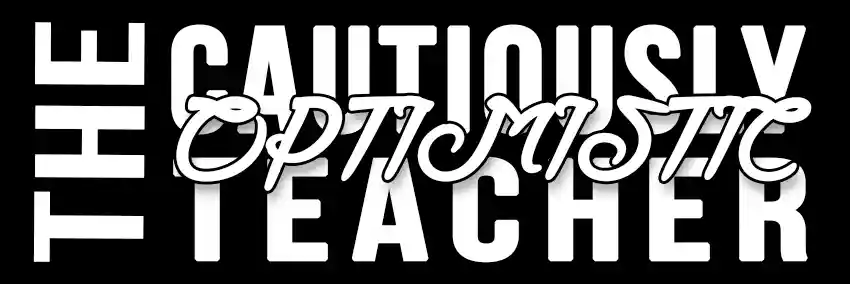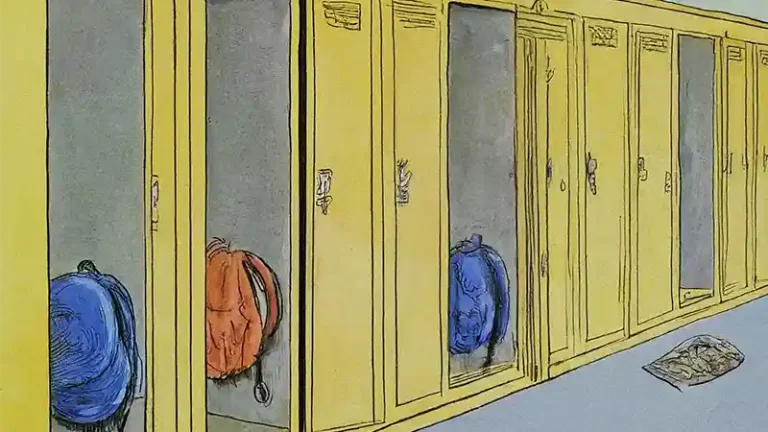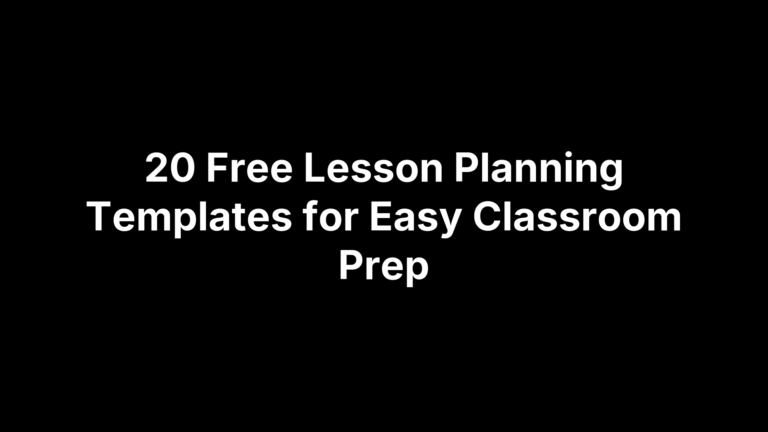Boost Critical Thinking and Achievement with Writing
In the vast landscape of education, writing has often been pigeonholed as a skill exclusively reserved for literature and language arts classrooms. Picture the scene: a student hunched over a desk, pen in hand, weaving tales of fiction or dissecting the themes of classical literature. This traditional image, however, barely scratches the surface of writing’s profound potential. Imagine students not only scribbling mathematical equations but also articulating the mysteries behind numbers. Or a place where a budding scientist doesn’t just conduct experiments but also pens their observations, drawing connections in words that might escape the naked eye. That world is not just a figment of our imagination but a tangible reality waiting to unfurl. By incorporating writing across all disciplines, we unlock an educational treasure trove, driving deeper understanding, fostering critical thinking, and paving the way for unparalleled academic achievement. The horizon of education is expanding, and writing, dear reader, is at its transformative heart. Join us as we journey through the untapped wonders of writing, beyond the confines of traditional boundaries, and into every classroom’s dynamic realm.
Background
The annals of education have long depicted a clear line separating ‘writing’ subjects from ‘non-writing’ ones. Traditional pedagogy placed literature, history, and the arts in one corner, where students delved deep into essays, analyses, and creative expressions. In stark contrast, subjects like mathematics, sciences, and physical education stood on the opposite side, where numbers, formulas, and actions took precedence over words. This bifurcation seemed almost unchallenged, a natural order where writing had its designated place and purpose.
But as Bob Dylan famously crooned, “The times, they are a-changin’.” The walls between subjects are becoming more permeable. In our modern age, the educational panorama is undergoing a seismic shift towards interdisciplinary learning. This fresh approach recognizes that real-world problems don’t come neatly categorized into ‘math’ or ‘history’; they’re intricate puzzles demanding a synthesis of knowledge from multiple domains. When students articulate the logic behind a mathematical theorem, pen down observations from a scientific experiment, or reflect on the emotions evoked in physical education, they’re doing more than just writing. They’re connecting dots, weaving a tapestry of interconnected understanding that stretches across subjects.
Interdisciplinary learning isn’t just a fancy buzzword; it’s a clarion call to see education as a holistic endeavor. The benefits are manifold. Students nurtured in such an environment develop a multifaceted perspective, are better equipped to tackle real-world challenges, and often showcase a deeper, more nuanced understanding of subjects. It’s a renaissance in the world of learning, with writing as the quintessential bridge connecting diverse islands of knowledge into a coherent, interwoven continent of understanding.
The Cognitive Benefits of Writing
At its core, writing is more than just an exercise in penmanship or a vehicle for communication. It’s a potent cognitive tool, a neural magic trick that enhances learning, memory, and thought clarity. Let’s delve into the transformative cognitive processes that get ignited when students put pen to paper.
Writing as a Form of Learning: Ever wondered why jotting down notes during a lecture or penning a summary after reading a chapter aids in comprehension? It’s because writing is a two-fold cognitive activity. First, there’s the extraction phase, where students sift through vast information to select what’s essential. Then comes the translation phase, where abstract thoughts metamorphose into concrete words. This two-step dance deepens understanding. As students write, they’re not just passively recording information; they’re actively processing, organizing, and internalizing it, fostering a more profound connection with the subject matter.
Writing and Memory – The “Generation Effect”: An intriguing psychological phenomenon, the “generation effect,” suggests that we tend to remember information better when we’ve had a hand in producing it. Writing is a prime example of this. When students write summaries, essays, or even scribbled notes, they’re generating content. This act of generation creates robust neural imprints, making it easier to recall and retain information. In essence, the very act of writing enhances memory, making lessons stick longer and firmer.
Writing and the Clarification of Thought: Every educator knows the familiar refrain: “I understand it, but I just can’t explain it.” Writing challenges this notion. When students are tasked with writing about complex topics, they’re compelled to dissect, reorganize, and often reevaluate their understanding. This process clarifies murky waters. Ambiguities come to the forefront, half-formed ideas take shape, and vague notions crystallize into clear, articulate thoughts. Writing, in this sense, is a mental sieve, filtering through the clutter and distilling ideas into their purest, most comprehensible form.
In a nutshell, writing isn’t just a mode of expression; it’s a cognitive powerhouse. By leveraging its myriad benefits, we’re not just making students better writers; we’re molding sharper thinkers, more attentive learners, and individuals better equipped to navigate the complexities of the world.
How Writing Boosts Critical Thinking
In a rapidly changing world teeming with information, critical thinking stands tall as an indispensable skill. More than mere rote learning, it’s the ability to evaluate, discern, and synthesize that sets apart innovative thinkers from passive learners. But where does writing fit into this picture? As it turns out, writing doesn’t just complement critical thinking—it actively cultivates it. Let’s navigate through the intricate dance between writing and critical thought.
Reflection and Analysis: Drowning in an ocean of information, today’s students are often overwhelmed. However, writing offers a lifeboat. When students write—be it an essay, a journal entry, or a short response—they transition from passive consumption to active engagement. This act of writing beckons reflection and analysis. Students must sift through data, weigh its significance, and decide what merits inclusion in their writing. They must ask: “What does this mean? Why is it important? How does it relate to what I know?” Such introspection fosters a deeper, more analytical relationship with information, pushing students to look beyond the surface.
Developing Arguments: Think of a debate, with two sides passionately presenting their cases. Now, transpose that to paper. When writing, especially in subjects where perspectives might differ, students must not only present information but argue a viewpoint. This requires a cohesive stance. To make a compelling case, they must marshal evidence, structure their thoughts logically, and anticipate counterarguments. In doing so, they hone their ability to think critically, ensuring that their positions are not just opinions but well-reasoned, substantiated arguments.
Problem Solving: Challenges are a part of life, and students are no strangers to academic hurdles. Here, writing emerges as an unexpected ally. Faced with a complex math problem? Writing out the steps can illuminate the path forward. Struggling with a scientific concept? Drafting a simplified explanation might shed clarity. By articulating challenges in written form, students often detangle knots of confusion, crafting pathways to solutions. Writing, in this context, serves as a medium for trial and error, hypothesis and testing, all of which are cornerstones of critical thinking and problem-solving.
In bridging the realms of writing and critical thought, we grant students a dual-edged sword. They not only communicate effectively but think discerningly, becoming adept navigators of both academic terrains and the broader challenges of life.
Benefits of Writing Across Various Subjects
The echoes of writing, often considered the heartbeat of language arts, have now reverberated into the broad spectrum of academic disciplines. It’s a symphony where every subject finds its rhythm through the medium of words. Here’s a look at how writing amplifies learning across diverse fields.
Mathematics: Gone are the days when numbers solely dominated the realm of math. Integrating writing into math education can demystify daunting abstract concepts. For instance, when students pen down their reasoning for solving an equation or describe their approach to a mathematical problem, they reinforce their understanding. This written reflection allows them to identify gaps in their comprehension and fosters a deeper connection between the abstract and the concrete.
Science: The empirical world of science is anchored in observations, hypotheses, and conclusions. Here, writing plays a pivotal role. Drafting lab reports pushes students to chronicle their experiments meticulously, ensuring each step aligns with the scientific method. Journaling observations or analyzing data in written form further cements the principles of rigorous scientific inquiry, teaching students not just to observe, but to discern and conclude.
History: The tapestry of history is woven with events, personalities, motives, and repercussions. Essays compel students to delve deeper into this intricate weave, drawing links between causes and effects. Reflection pieces can prompt students to view historical events through various lenses, fostering empathy and a more nuanced understanding of the past’s multifaceted narratives.
Physical Education: At first glance, physical education and writing might seem like an unlikely pair. However, when students journal their progress, whether in mastering a sport or improving physical fitness, they develop a keen awareness of their growth and challenges. Writing about body mechanics or the psychology underlying sports can enhance their grasp of physical endeavors, making them more attuned athletes and individuals.
Arts and Music: The world of arts and music, brimming with emotions and expressions, finds a resonant partner in writing. Crafting critical reviews allows students to engage with art forms analytically, refining their evaluative skills. Penning artist statements or reflections on their creative processes not only provides insights into their artistic journeys but deepens their appreciation of the intricate dance between inspiration, technique, and expression.
Incorporating writing into these diverse domains transforms the educational experience. It bridges the cognitive with the expressive, the theoretical with the practical. Through this integration, students aren’t just learners—they become thinkers, observers, and articulators, ready to engage with the world in its myriad shades.
Practical Steps for Educators

While the myriad benefits of integrating writing across subjects are evident, the question that often arises for educators is: “How?” Implementing this approach requires thoughtful strategies that don’t just pile on tasks but enhance the learning experience. Here are practical steps educators can adopt to make writing a potent tool across the curriculum:
Integrate, Don’t Add: It’s essential to remember that the goal isn’t to add more to the plate but to intertwine writing with existing content. For instance, in a science class, instead of a separate essay assignment, students can be asked to write detailed observations after an experiment. In math, a portion of the problem-solving session can involve writing about the thought process behind a solution. This seamless incorporation ensures students view writing as a natural extension of learning, rather than an added burden.
Provide Structure: Especially when introducing writing tasks in traditionally non-writing subjects, students might feel like fish out of water. Offering a guiding hand can make a world of difference. Rubrics can outline expectations, templates can provide a foundational structure, and exemplary samples can offer a vision of the end goal. By providing these scaffolds, educators ensure that students are not lost but have clear markers guiding their journey.
Promote Peer Reviews: The classroom is a mini ecosystem of diverse thinkers and writers. Capitalizing on this diversity, educators can promote peer reviews. This practice not only provides students with varied feedback but also fosters a culture of collaborative learning. Reading peers’ work can offer fresh perspectives, and the act of reviewing hones critical evaluation skills. The key is to nurture a positive environment where feedback is constructive, kind, and aimed at mutual growth.
Encourage Reflection: One of the profound strengths of writing lies in its reflective nature. Educators should emphasize that writing isn’t just a tool for grades; it’s a mirror to one’s thoughts and growth. Setting aside dedicated ‘reflection time’, where students pen down their learning experiences, challenges faced, or even feedback on the teaching methods, can be illuminating for both students and teachers. Such reflective writing nurtures self-awareness, promotes metacognition, and emphasizes the journey of learning over mere outcomes.
In the quest to incorporate writing across the board, educators stand at the forefront, charting the course. With these practical steps, they can transform classrooms into dynamic spaces where writing is not an isolated skill but an integral part of the broader tapestry of education.
Challenges and Considerations
While the integration of writing across subjects offers a promising paradigm shift in education, like all transformative approaches, it comes with its unique set of challenges. Recognizing these hurdles and addressing them proactively ensures that the journey, while adventurous, remains fruitful.
Potential Resistance from Students and Educators: Change is often met with a mix of curiosity and resistance. Students accustomed to specific learning patterns might view the infusion of writing tasks with trepidation. “Why am I writing in a math class?” might be a common refrain. Similarly, educators, especially those in non-traditional writing subjects, may feel out of their depth or concerned about the additional grading load. Overcoming this resistance requires patience, clear communication about the benefits, and a phased approach, allowing both students and teachers to adapt gradually.
Balancing Quality vs. Quantity of Writing Assignments: There’s a potential pitfall in equating more writing with better learning. The focus should always lean towards quality. It’s not about how many essays or journals a student writes, but the depth of thought, reflection, and learning that those pieces manifest. Educators must strike a balance, ensuring that writing tasks are meaningful, relevant, and serve a clear purpose in the broader educational narrative.
Ensuring Feedback is Constructive, Timely, and Helps Improve Student Skills: One of the main drivers behind writing’s effectiveness is the feedback loop. However, feedback that is vague, delayed, or overly critical can diminish the benefits. Educators face the challenge of providing feedback that’s actionable and encourages improvement. This involves not just pointing out areas of concern but offering suggestions for enhancement. Moreover, with the increased volume of written assignments, timeliness can become a challenge. Employing tools, such as peer reviews, digital grading systems, or even dedicating specific feedback sessions, can help manage this while ensuring students receive the guidance they need.
Venturing into the realm of integrated writing is akin to exploring uncharted waters. There will be waves of enthusiasm, undercurrents of resistance, and the occasional storm of doubt. However, with a compass of awareness about potential challenges and a clear map of solutions, educators can navigate these waters successfully, leading their students towards shores of enriched learning and deeper understanding.
Conclusion
In the vast tapestry of education, writing stands out as a golden thread weaving through the heart of knowledge, comprehension, and expression. Traditionally relegated to the confines of literature and language arts, the potential of writing stretches far beyond. When integrated across subjects, writing becomes more than just a skill – it transforms into a catalyst, propelling deeper understanding, sharper critical thinking, and a more holistic approach to education.
Yet, the journey has only just begun. Across countless classrooms worldwide, the transformative potential of integrated writing remains untapped. It beckons educators, curriculum developers, and policymakers to look beyond the traditional and step into the realm of possibility. The blueprint has been laid out, the benefits are evident, and the stories of success resoundingly clear.
As we stand at the crossroads of educational evolution, the call to action is evident: Let’s rethink boundaries. Let’s embrace writing not just as a subject, but as a universal tool that enhances every facet of education. In this era of interconnected knowledge, it’s time to envision a world where every student, regardless of their primary discipline, is also a writer, thinker, and communicator. And in doing so, let’s craft a future where learning is not just absorbed but lived, articulated, and cherished.
Further Resources
Books
Writing Across the Curriculum: A Guide to Developing Programs by Susan H. McLeod and Margot Soven – A deep dive into the strategies for embedding writing into various curricula.
Engaging Ideas: The Professor’s Guide to Integrating Writing, Critical Thinking, and Active Learning in the Classroom by John C. Bean – Combines the facets of writing, critical thinking, and active learning effectively.
Write to Learn by Donald M. Murray – This book emphasizes the importance of writing as a tool for learning across all disciplines.
Online Resources
The WAC Clearinghouse (Colorado State University) – Offers resources, publications, and links on Writing Across the Curriculum.
National Writing Project – Offers strategies and resources for teaching writing across subjects.
Organizations and Associations
Association for Writing Across the Curriculum – A community that supports writing across the curriculum practices and research.
The National Association for Media Literacy Education (NAMLE) – Provides resources for integrating critical thinking and writing in relation to media.
Tools and Software
Grammarly for Educators – Helps students refine their writing skills.
Turnitin – Software to ensure originality and provide feedback on student writing.







